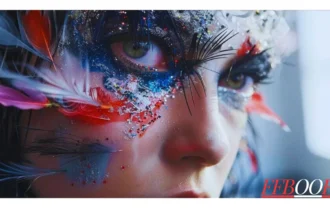Introduction to Ancient Artz and its Significance
Step into a world where creativity and culture intertwine, shaping the very foundations of civilization. Ancient artz offers us a fascinating glimpse into the lives, beliefs, and aspirations of those who came before us. From intricate carvings to monumental architecture, these artistic expressions tell stories that transcend time. They connect us to our shared humanity while showcasing the unique traits of diverse cultures.
As we embark on this journey through ancient artz, prepare to explore not just visual masterpieces but also profound insights into how different societies viewed their existence. Each piece is a window into history – revealing complex rituals, societal structures, and the values held dear by past civilizations. Let’s dive deep into this captivating realm where every brushstroke and chisel mark speaks volumes about human experience across epochs!
The Different Types of Ancient Artz
Ancient artz comes in various forms, each reflecting the culture and values of its time. From intricate pottery to grand sculptures, every piece tells a story.
Sculpture is one of the most celebrated types. Ancient artz civilizations carved stunning figures from stone or molded them from clay. These pieces often depicted gods, leaders, or everyday life.
Paintings also played a significant role. Frescoes adorned walls in palaces and temples, showcasing vibrant colors and dynamic scenes that captured religious beliefs or historical events.
Textiles are another fascinating category. Woven fabrics displayed craftsmanship and artistry while serving practical purposes in daily life Ancient artz.
Architecture stands as a testament to human ingenuity. Monumental structures like temples and pyramids not only served spiritual needs but also symbolized power and community identity across different cultures.
Mesopotamian Art: From Cuneiform to Ziggurats
Mesopotamian art is a fascinating glimpse into one of humanity’s earliest civilizations. Emerging around 3500 BCE, it offers a rich tapestry of creativity and innovation.
Cuneiform writing marks an essential milestone. This early form of script was etched onto clay tablets, capturing everything from trade records to epic tales like the “Epic of Gilgamesh.” Each wedge-shaped mark tells a story.
Ziggurats towered majestically over the landscape. These massive stepped structures served as temples dedicated to various gods. Their grandeur reflected not just architectural skill but also deep religious beliefs.
Sculpture flourished too, with intricate reliefs showcasing battles and divine beings. Artists depicted life in vivid detail—humans interacting with deities or mythical creatures.
Every piece reveals something profound about society’s values and aspirations during this remarkable period in history. Mesopotamian art remains an enduring testament to human creativity amid the sands of time.
Egyptian Art: From Pyramids to Hieroglyphics
Egyptian art is a profound reflection of its civilization’s beliefs and values.Ancient artz The grandeur of the pyramids captures the essence of their architectural genius. These monumental structures were not just tombs; they symbolized eternal life and divine connection.
Hieroglyphics, on the other hand, served as a visual language that conveyed stories. Each carving told tales of gods, pharaohs, and daily life. They believed in preserving knowledge for the afterlife through these intricate symbols.
Sculptures from this era reveal meticulous attention to detail. Statues often depicted gods or important figures with exaggerated proportions to signify power.
Color played a significant role too. Bright pigments were used strategically to convey meaning and evoke emotion in paintings found within tombs and temples.
Together, these elements create an awe-inspiring narrative that still captivates historians and art enthusiasts alike.
Greek Art: A Balance of Beauty and Mythology
Greek art is a breathtaking fusion of aesthetics and storytelling. It reflects the civilization’s profound connection to mythology, where gods and heroes come alive through sculpted forms.
The Greeks mastered realism.Ancient artz Their sculptures breathed life into marble, showcasing human emotion and physical beauty. Think of the iconic statues like Aphrodite or Apollo, which embody grace and strength.
Pottery also played a vital role in Greek culture. Vases adorned with intricate scenes reveal tales from mythology, depicting epic battles or divine interactions. Each piece served both functional and artistic purposes.
Architecture stands as another testament to their ingenuity. The Parthenon, with its majestic columns and harmonious proportions, remains an enduring symbol of Ancient artz artistry.
In every brushstroke or chisel mark lies a narrative that transcends time—an invitation to explore the rich tapestry of beliefs that shaped their world.
Roman Art: Influenced by the Greeks but with its Own Style
Roman art stands as a remarkable testament to its creators’ ingenuity. While heavily influenced by Greek aesthetics, it carved out a distinct identity.
Sculpture was a vital element of Roman culture. The Romans excelled in realism and portraiture, capturing the unique features of their subjects with precision. This focus on individuality set them apart from the idealized forms often seen in Greek works.
Architecture also showcased Roman innovation. Grand structures like aqueducts and amphitheaters displayed engineering prowess and functionality. The use of arches transformed building designs while enhancing durability.
Mosaics adorned floors and walls, narrating stories from mythology to everyday life.Ancient artz These vibrant artworks offered insight into domestic settings, showcasing both beauty and craftsmanship.
In essence, Roman art melded practicality with artistry, creating pieces that reflected their society’s values while embracing influences from earlier cultures.
Mayan Art: A Window into Their Civilization
Ancient artz mayan art serves as a captivating portal into one of the most intriguing civilizations in history. Richly detailed sculptures, vibrant murals, and intricate pottery reveal a society deeply connected to its environment and beliefs.
The Mayans excelled in stone carving. Intricate depictions of gods, animals, and scenes from daily life adorned temples and monuments. Each carving told stories that transcended time.
Ceramics were equally significant. Painted vessels showcased elaborate designs that reflected their cosmology.Ancient artz These artworks often depicted rituals or important events.
Textiles played a crucial role too. Woven garments displayed not only artistry but also social status within communities.
Through their artistic expressions, the Mayans communicated complex ideas about life, death, and spirituality—a testament to their sophisticated worldview that continues to fascinate modern audiences today.
Conclusion: The Enduring
The legacy of ancient artz continues to captivate and inspire. Each piece tells a story, reflecting the beliefs, values, and cultures of civilizations long gone. From the intricate carvings of Mesopotamia to the grandeur of Egyptian pyramids, every artwork serves as a portal into history.
Art has always been more than mere decoration; it embodies human experience across time. The Greeks transformed artistic expression by blending beauty with mythology, while Roman art showcased innovation through adaptation. Meanwhile, Mayan creations reveal deep insights into their society and cosmology.
As we explore these diverse forms of ancient artz today, we gain not only knowledge but also appreciation for those who came before us. Their creativity resonates through centuries and reminds us that art is an enduring language that transcends boundaries—connecting us all in our shared humanity.

















